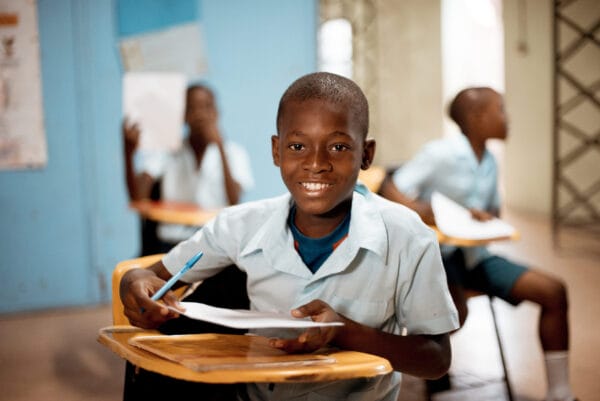
– –
During March last year, schools across Kenya had to close due to COVID-19. Because of this, roughly 10 million primary school children have had to rely on alternative learning methods to continue their education.
While other countries quickly transitioned to online learning methods, adjusting to remote learning proved trickier in Kenya where Internet penetration is just 40%, according to Data Reportal.
However, this hasn’t dampened Kenyans’ dedication to pursuing education, as state and private organisations instead offered innovative remote learning solutions.
Organisations turn to alternative means of digital penetration
Though the number of stable internet connections in Kenya is relatively low, the number of smartphone users is among the highest in the region. In fact, between January 2020 to 2021, mobile penetration jumped by 11%.
Private schools and organisations have taken advantage of this by harnessing SMS and chat apps to deliver learning modules. Bridge International Academies developed their free Bridge@home programme, which includes sending gamified mobile quizzes via WhatsApp — an app that 97% of online Kenyans use.
– –
They also designed digital storybooks and lesson guides in smartphone-friendly formats. Similarly, Eneza Education introduced its SMS platform to rural students at no cost. Using this platform, students and parents can receive curated learning content in line with their grade’s curriculum.
Meanwhile, the Ministry of Education and Kenya Institute of Curriculum Development (KICD) have also uploaded several free online textbooks on a specially created website called the “Kenya Education Cloud”.
Bridging the internet gap with multi-modal mediums
In line with UNICEF’s 2019 recommendation that countries provide multi-modal learning sources, 67% of Kenyan children have also been turning to radios and television for remote schooling.
Since surveys show that most children in rural Kenya spend the lockdown helping their parents with work, radio classes are among the most accessible given their portability.
– –
What’s more, after charities like the Zizi Afrique Foundation distributed solar-powered radios around the country, even communities with intermittent electricity could listen to radio classes.
For households with continuous electricity, television classes have proven popular, with 26% turning to this medium. As part of their multi-modal initiatives, the KICD has also included television in the Education Technology (EdTech) lineup.
Using the KICD-owned Edu Channel TV, the Ministry of Education has been broadcasting educational content that adheres to the present syllabus at no extra cost to viewers.
So that students and parents can plan their lessons accordingly, the KICD posts a timetable of content for both their radio and television broadcasts ahead of time.
And aside from the television content provided by the government, Reuters reports that other non-profits, like Ubongo (a Tanzanian organisation), are also creating and sharing free educational materials. Currently, over 17 million households turn to Ubongo for educational resources.
Kenya’s goal of improving education for all still within reach
Through the implementation of these alternative remote learning initiatives, Kenyans are thriving on accessible omnichannel efforts. Now, as face-to-face school resumes, the government’s national education goals are back on track.
These include what Minister of Basic Education Angie Motshekga explained as programmes to teach young boys to deal with power relations between sexes. In line with this aim to enhance literacy and gender equality, the Information and Communications Technology (ICT) Cabinet has also launched a digital learning programme.
Hoping to improve computer literacy in young girls, this means that Kenyan school children can now look forward to new computer labs with internet access in their local schools.
Regardless if in-person schooling will continue or have to be halted again, students, educators, and parents can rest easy. Local innovations in educational accessibility provide a multitude of learning resources at their fingertips. These are, no doubt, crucial in raising the next generation of Kenyan professionals.
